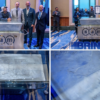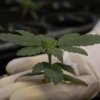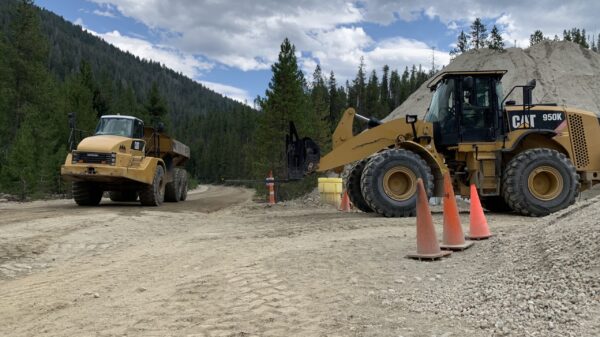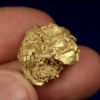Snowline Gold Corp. (TSXV: SGD) (OTCQB: SNWGF) returned high grade gold intercepts from its Rogue Project in the Yukon Territory.
The company announced results on Tuesday from the second and third holes of its 2023 drilling program.
Hole V-23-036 averaged 2.92 grams of gold per ton of rock (g/t Au) over a distance of 143.5 meters, starting from a depth of 23.5 meters. In addition, within a broader interval, it found an average gold grade of 1.53 g/t Au over a much larger distance of 414.5 meters from the surface of the bedrock.
The second hole expanded the known mineralization to the western edge of the Valley intrusion. Over a distance of 396.5 meters from the surface of the bedrock, it showed an average gold grade of 1.01 g/t Au. There are still pending results for 17 more holes that have been drilled in the Valley, totalling a distance of 6,650 meters.
“The gold grades and continuity in V-23-036 add a large tonnage of potentially high-value rock to this zone, which remains open further to the southeast,” said Scott Berdahl, CEO and director of Snowline.
“In addition, the breadth of the mineralized interval in V-23-035, drilled from the western margin of the intrusion, highlights the breadth of strong mineralization present outside of the highest-grade core at Valley, both laterally and to depth.”
Hole V-23-036 followed the same trend as a significant gold discovery made in 2022. This hole is located 75 meters away from previous holes that encountered gold mineralization.
The entire hole showed mineralization, with an average gold grade of 1.53 grams per ton (g/t Au) over a distance of 414.5 meters, starting from the surface of the bedrock at a depth of about 4 meters. Within this interval, there is a higher-grade section where the gold grade averaged 2.92 g/t Au over 143.5 meters, starting from a depth of 23.5 meters.
The hole continued beyond the Valley intrusion and ended with lower gold mineralization, averaging 0.43 g/t Au over the final 20 meters.
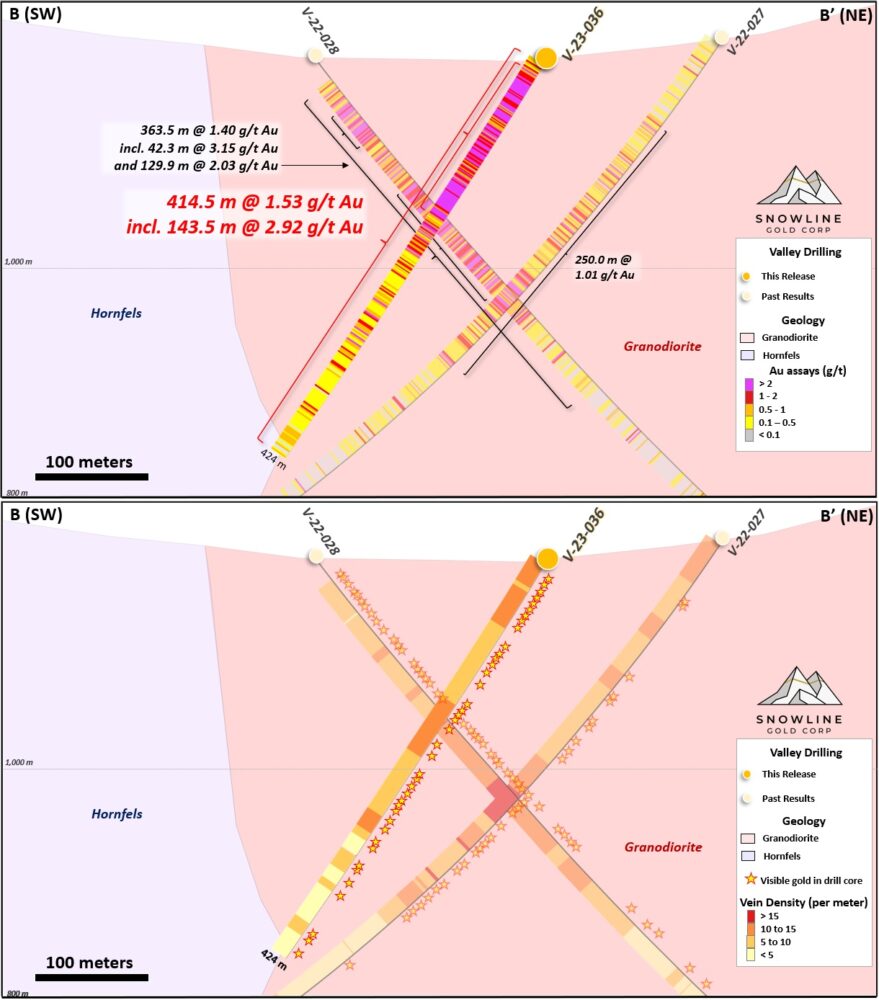
Cross-section B, showing results received (top) and vein densities alongside instances of visible gold observed during logging (bottom). Image via Snowline Gold.
Read more: NevGold shareholders approve GoldMining as new ‘control person’ at special meeting
Read more: NevGold discovers new untested areas at Limousine Butte
Majority of the samples showed grades higher than 1.0 g/t Au
Within the higher-grade interval of 143.5 meters, the majority of the samples (131 out of 148) showed gold grades higher than 1.0 g/t Au, indicating good continuity of gold mineralization. Only one sample within this interval had a lower gold grade of 0.49 g/t Au.
Hole V-23-035 was drilled near the southwestern boundary of the Valley area, and approximately 130 meters away from the nearest hole. It was specifically drilled towards the northeast to investigate both near-surface and deeper gold mineralization in that part of the area.
The initial part of the hole showed consistent mineralization, with an average gold grade of 1.01 grams per ton (g/t Au) over a distance of 396.5 meters from the surface of the bedrock at a depth of 20 meters. In a separate interval deeper down the hole, there was another section with an average gold grade of 0.44 g/t Au over 40.1 meters, starting from a depth of 429 meters. The hole ended with weak and sporadic mineralization, where the final 3.5 meters had an average gold grade of 0.23 g/t Au.
The gold grades encountered in Hole V-23-035 along the southwestern margin of the known mineralized system are robust, with grades consistently higher than 1 g/t Au. This provides strong support for the idea that there is a large, economically viable body of gold mineralization in the Valley area. The presence of such high-grade gold near the surface suggests that the extraction process would require minimal waste removal and would have little impact on diluting the gold content within the deposit.
Read more: NevGold discovers oxide gold from the surface at Nutmeg Mountain
Read more: NevGold finds high-grade gold underneath the surface at Nutmeg Mountain
The Yukon Territory presents opportunities for exploration
The Yukon is known for its rich deposits of gold, silver, copper, zinc and more, offering significant opportunities for exploration and extraction. Situated within the Canadian Cordillera, the Yukon benefits from diverse geological formations, such as fault lines and rock structures, which create favourable conditions for the formation of valuable mineral deposits.
After careful consideration, Hecla Mining Company (NYSE: HL) has successfully completed the acquisition of ATAC Resources Ltd., along with its Rackla and Connaught properties in Yukon, Canada.
Hecla Mining’s president and CEO, Phillips Baker Jr., expressed the strategy of acquiring large land areas with significant exploration potential in mining-friendly regions. The Rackla and Connaught properties in Yukon cover a massive land area of over 700 square miles (1,830 square kilometers), which is roughly half the size of Rhode Island. These properties have known deposits of gold, silver and base metals.
Other mining companies operating in the region include Victoria Gold Corp. (TSX: VGCX), Strategic Metals Ltd (TSXV: SMD), Banyan Gold Corp. (TSXV: BYN) (OTCQB: BYAGF), Triumph Gold (TSXV: TIG), Fireweed Metals Corp. (TSXV: FWZ), White Gold Corp. (TSXV: WGO) and Strikepoint Gold Inc. (TSXV: SKP) (OTCQB: STKSF).
.
Follow Joseph Morton on Twitter
joseph@mugglehead.com





